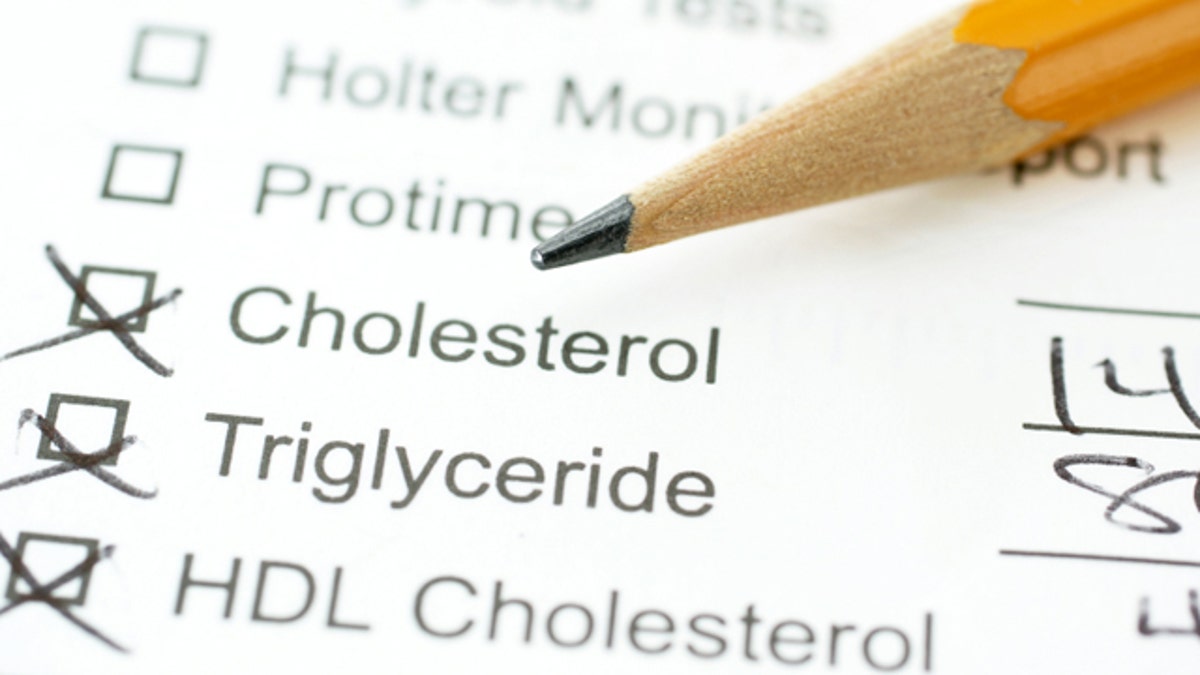
(iStock)
There are three ways to avoid taking cholesterol-lowering medicines: Eating a heart-healthy diet, getting enough physical activity and avoiding tobacco.
However, there are other factors that play into whether you may need drugs to lower your cholesterol levels, such as genetics or current risk factors, Dr. Richard Stein, a spokesman for the American Heart Association and professor of medicine and cardiology at New York University School of Medicine, told FOXNews.com.
So, how do you know it’s time to take cholesterol-lowering medications?
The following may be used as a guide, but be sure to check with your cardiologist or primary care physician first.
Stein said he usually looks at a patient’s age and gender, along with their level of low-density lipoprotein, or LDL, which is considered the body’s “bad cholesterol” in determining when they need medication.
When LDL levels become too high, cholesterol can clog the arteries, which can lead to heart disease.
— LOW RISK: If you are a man under the age of 40, or a woman under the age of 50, and you do not have diabetes or a history of stroke or high blood pressure and you don’t smoke, and you are not obese, then your LDL can be anything under 160.
— If you are considered at low risk for heart disease, but your LDL level is between 175 to 180, then you may be able to try a heart-healthy diet and exercise before medication, Stein said.
“But, you need to remember that just because you dropped your LDL levels once and come back to the doctor doesn’t mean you stay drug-free,” Stein said. “You have to make a lifestyle commitment, and keep coming back to your doctor for check-ups.”
Stein recommends a Mediterranean diet or a version of that called the DASH Diet for patients trying to lower their cholesterol levels.
“The DASH Diet is designed to treat hypertension, and you can shop for it without going into fancy stores,” he said. “I would try the diet, try exercising, and definitely stop smoking.”
The DASH Diet includes:
— 6 to 12 servings of grain products per day;
— 4 to 6 servings of fruits per day;
— 4 to 6 servings of vegetables per day;
— 2 to 4 servings of low fat or non-fat dairy foods;
— 1.5 to 2.5 servings of lean meats, fish or poultry per day;
— 3 to 6 servings of nuts, seeds and greens per week.
If you are going to exercise, it must be 40 to 60 minutes three times a week or 30 minutes “most days of the week,” Stein said.
— INTERMEDIATE RISK: If you have two or more risk factors, such as a history of stroke or peripheral vascular disease, then your LDL level should be 130 or lower.
— Stein said you if fall into the intermediate risk category, you can try diet and exercise before medicines only if your LDL is no higher than 145
— HIGH RISK: If you already have heart disease or diabetes, your LDL level should be below 100 and it’s unlikely you will achieve this with diet and exercise alone, Stein said.
“The third thing we look at is triglycerides,” he said. “If that’s above 150, and you are overweight, you should diet. If you can lose the weight, your levels should come down.”
If diet and exercise fail to lower your triglyceride levels (blood fats), Stein said he would use drugs like Tricor or Lopid, which are fibrates.
Another option, he said, is Niacin, a B vitamin, which comes in either prescription form or dietary supplement, and works in the liver by affecting the production of triglycerides.
If you are going to be taking medication for cholesterol, the American Heart Association's Web site recommends you ask your health care provider the following questions:
What is the medicine supposed to do?
How and when do I take it, and for how long?
What food, drinks, other medicines or activities should I avoid while taking this medicine?
What are the possible side effects?
What happens if I miss a dose?
How will I know if the medicine is working?
What are the risks of NOT taking this medication?
